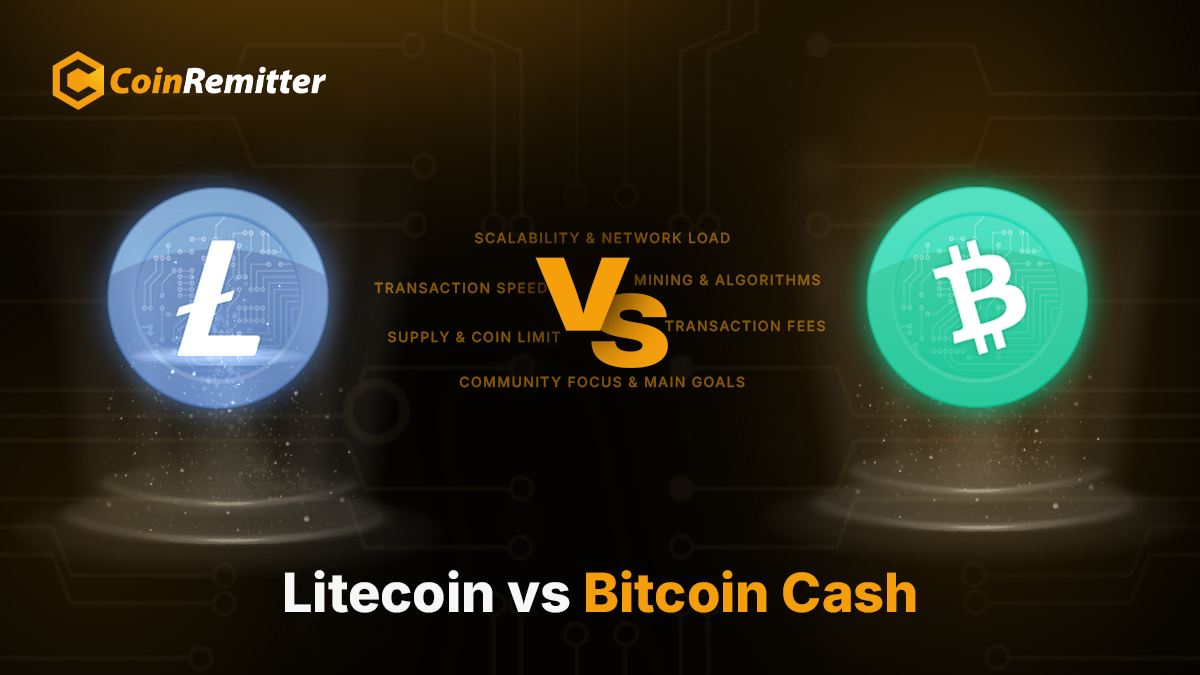How CBDCs differ from Cryptocurrencies?

With the rise in digital currencies for payments and transactions, two innovations are much discussed: Central Bank Decentralised Currencies (CBDCs) and cryptocurrencies. While both promise a cashless future, they differ significantly in their concept and purpose. Let's break down the key differences between CBDCs and cryptocurrencies.
CBDCs
Central Bank Decentralised Currencies (CBDCs) is a form of digital currency, that is issued and regulated by the central bank of a country. Unlike printing fiat currency, CBDCs are stored electronically and can be used for instant payments and transactions.
Examples of CBDCs include the Sand Dollar by the Central Bank of the Bahamas, the eNaira in Nigeria, and the Digital Ruble by the Central Bank of the Russian Federation.
According to the Atlantic Council, 68 countries are currently in the advanced stages of developing, piloting, or launching their digital currencies.
[Also Read: 2024 Might be Full of Central Bank Digital Currency Launches, Know How]
Advantages of CBDCs:
Effective in cross-border transactions:
According to the World Bank, migrants bear an average fee of 6.25% when sending money home. CBDCs can lower these costs by eliminating the need for money transfer services and also speed up cross-border transactions. While international payments can take a few days, CBDCs can make payments in seconds.
Financial Inclusion:
Digital wallets can be used on various devices like mobiles, tablets, and laptops, allowing people to access financial services from remote areas easily. This accessibility makes it more convenient for individuals to participate in the economy.
Enhanced Efficiency:
CBDCs make transactions more efficient by reducing reliance on banks. Since central banks control CBDCs, they can track and manage the currency effectively, helping to control the economy and prevent inflation by adjusting interest rates.
Risk Minimized:
Since transactions are handled by the central bank, individuals always receive their payments. This reduces counterparty risk, meaning you don't have to worry about someone defaulting on your payments, making CBDCs an attractive option. Also, central banks won't share or sell your data, reducing the risk of your personal information being traded.
Disadvantages of CBDCs:
Privacy Issues:
In CBDCs, transactions are recorded on a public ledger. People may be concerned about their financial activities being monitored, which could lead to privacy breaches.
Disruption of Banks:
CBDCs will disrupt traditional banks by giving individuals and businesses direct access to central bank services. This will reduce bank deposits and lending activities.
Technological challenges:
CBDCs can face technological challenges. They need a lot of investment in new technology and infrastructure, which can be costly.
Cryptocurrencies
Cryptocurrency is a digital currency that is fully decentralized and not regulated by any government or central bank. It uses blockchain technology, which is a public ledger that records all transactions and secures them with cryptography.
Ethereum, Dogecoin, Tether, and Cardano are some of the examples of cryptocurrencies.
Advantages of Cryptocurrencies:
Decentralization:
One big advantage of cryptocurrencies is their decentralization. Unlike the traditional system, cryptocurrencies are managed by developers. This prevents the monopoly from controlling the currency's flow or value.
Complete Security:
Cryptocurrencies prioritize privacy and security. The blockchain ledger uses complex puzzles, making it difficult to decode and ensuring safer transactions compared to traditional electronic methods. Cryptocurrencies offer complete security by using pseudonyms not linked to user accounts or stored data.
Low Transaction Costs:
Cryptocurrency's blockchain replaces traditional payment processors, cutting out the middleman and reducing fees for transactions, making purchases cheaper than using regular currency.
Accessibility:
One of the big benefits of cryptocurrency is that anyone can use it. All you need is internet access and a computer or phone. Setting up a Bitcoin wallet is much faster than creating an account at a traditional bank.
Disadvantages of Cryptocurrencies:
Volatility:
Cryptocurrencies are famous for their price ups and downs, which can happen fast. This makes them risky for investors and can stop them from being widely used as stable ways to store value or make transactions.
Scalability:
Certain cryptocurrencies, like Bitcoin, have had problems handling lots of users at once, leading to delays and higher fees for transactions during busy times.
Potential for crimes:
Cryptocurrencies being decentralized can attract fraudsters and scammers. There have been cases of fake initial coin offerings (ICOs), phishing attacks, and Ponzi schemes in the cryptocurrency world.
Difference Between CBDCs and Cryptocurrencies
Structure:
CBDCs are digital currencies controlled by central banks, following government rules. They're part of the existing financial system and managed by central banks, helping to keep money stable. Cryptocurrencies, on the other hand, work on decentralized networks using blockchain. They're not controlled by any central authority, allowing direct transactions between users without middlemen.
Stability:
CBDCs are linked to a country's fiat currency, so they stay stable. This makes them good for regular purchases because their value doesn't change a lot. But cryptocurrencies like Bitcoin and Ethereum can change a lot in value. Their prices depend on how much people want them, so they can go up and down a lot.
Privacy:
CBDCs can have different levels of privacy, depending on how central banks set them up. Some prioritize privacy for transactions, while others have features that let regulators check for illegal activities. Cryptocurrencies are usually linked with anonymity because people don't have to give their names to use them.
Encryption:
Cryptocurrencies are protected by encryption. These coins are privately owned and created using advanced blockchain technology. Unlike cryptocurrencies, CBDCs don't need encryption, but users should secure their digital wallets and banking apps with strong passwords and biometric authentication.
Conclusion
Both CBDCs and cryptocurrencies have a role to play in the evolving financial world. CBDCs offer stability and security. With their focus on decentralization, cryptocurrencies can bring innovation. The future might involve a coexistence of both, each catering to different needs.
Over 38,000 merchants are using CoinRemitter
Join them now



